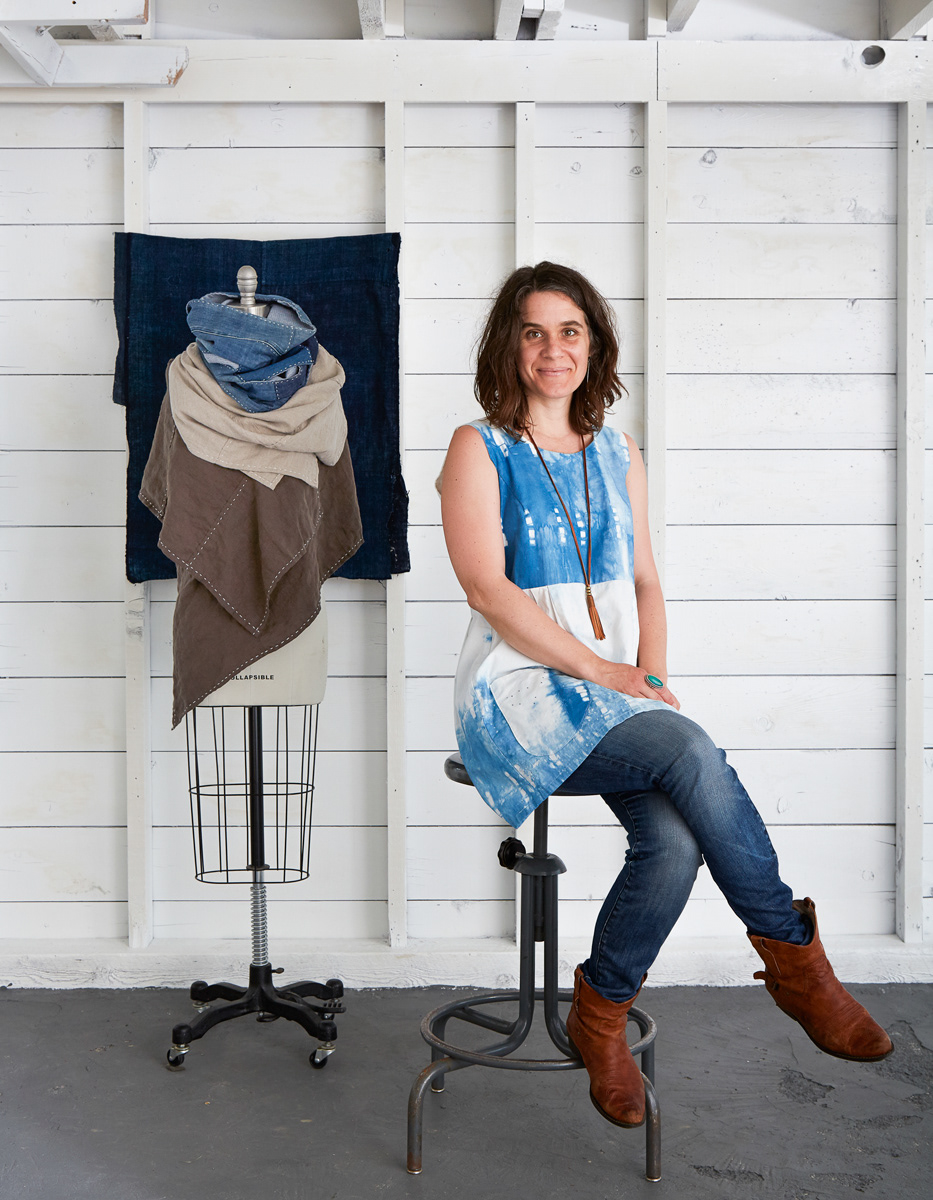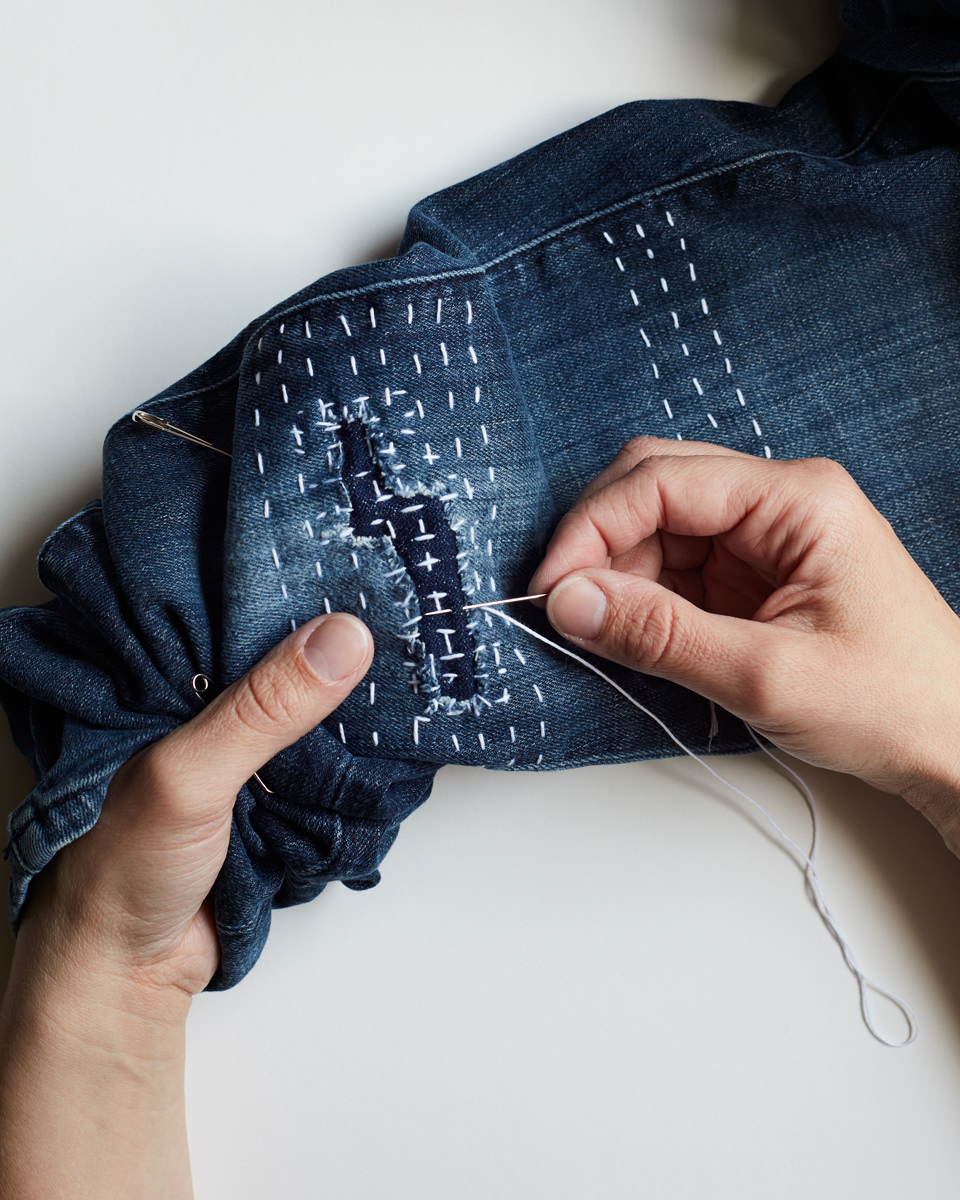What connections do you find/make between slow fashion/mending and slow food?
I always go back to the triad of our basic needs—food, clothing, shelter—and see how I can deepen my relationship to sustainable living within each category. In so many ways the Slow Food movement paved the way for Slow Fashion. Yet so many folks who support local farmer's markets, buy organic, and keep plastic out of their kitchens are not yet prioritizing locally made clothing, buying organic cotton, and keeping synthetics out of their closets.
It’s a complicated global fashion industry, but we’ve overlooked the connection between our clothing and the people who grow, make, and recycle our castoff clothes. Yet small shifts in consumer habits can lead to lasting impacts—prioritizing organic cotton and linen, shopping secondhand, and mending or dyeing what we already own can make important headway towards a more sustainable wardrobe. I think my garden is the biggest meeting ground of Slow Food and Slow Fashion—dye plants grow alongside edibles and medicinal herbs so I'm harvesting calendula for salves, winter teas, and color for cloth.
How did your interest in slow fashion start?
I was an Environmental Studies major in college so my commitment to sustainability started when I was young. But straight out of college I went to work for arts organizations—theaters, galleries, nonprofit community centers—and knew my heart was in writing and fiber arts. Fast-forward two decades, a graduate degree in poetry/ book arts, and many years as an arts program director while moonlighting as a fiber artist. Then the Rana Plaza garment factory collapsed in Dhaka Bangladesh in April 2013. That was the moment when I realized I wasn't considering sustainability in my wardrobe like I was in my kitchen, garden, or even my fiber arts work.
I launched a project, Make Thrift Mend, intended to just be a personal art project, or social practice project, to stave off fast-fashion for one year. I abstained from buying new clothing for that year and instead focused on making garments, buying secondhand, and mending what I already owned. One year grew into five years and in 2018 it’s still the center of my studio work and my professional work too. I teach mending, natural dyes, and eco fashion. I organize public events highlight the importance of handcraft in sustainable fashion. I write about my sustainable fashion heroes. And in October 2018 my second book, Mending Matters, will be published by Abrams Books.



Photos from Katrina Rodabaugh's book, Mending Matters, published by Abrams Books with photography by Karen Pearson.
I know you and your partner had a garden in Oakland and have one now in NY. Has your connection to the land changed since you've moved and/or since you have become more and more committed to slow fashion and mending and dyeing? If so, how?
My husband, David, and I lived in major urban centers from 1999 until 2015. For sixteen years we lived between San Francisco, CA, Brooklyn, NY, and Oakland, CA. We lived in Oakland, CA for over a decade before moving to our current, one-acre homestead and 200-year-old farmhouse in October 2015. In our city living in CA we always had a small backyard garden with a few garden beds mostly for veggies. Our Brooklyn apartment didn't have backyard access but we did have herbs on the windowsill and shop at the local food coop and local farmer's markets. But when we moved to our farmhouse the scale of our gardening shifted significantly.
Now we have fruit trees, a large vegetable/ herb garden, a flower/ dye garden, and we just welcomed chickens and bees. This scale of gardening allows us to grow more food, dyes, and herbs but it also allowed us to create more sustainable systems like rainwater catchment, backyard composting, and simple things like storing fallen Silver Maple branches for wood stove kindling. Plus, we have access to nearby fields, forests, and local farms to collect and forage plants for dyes, foods, and medicines.
The goldenrod in my neighbor's orchard is no longer just a seasonal wildflower, it's now a field of potential color for natural fibers like wool, silk, cotton, and linen. The spring dandelions are no longer brightly colored yard weeds but they're edible, medicinal, dye plants that also offer our bees the first spring foods. Of course, all these connections are possible in an urban area too—and we foraged for dye plants on our hikes in the Oakland Hills—but now we're immersed in a rural environment that also happens to be a hotbed for small farms and artisans from NYC. So we're deepening our connection to sustainability and its relationship in our creative work and studio practices.
Has your connection to the land changed since you've had kids?
We have two young boys—aged six and three-years-old. Everything changed when we had kids, of course, but who we are as people and what we value the most didn’t change. Parenting is a huge lifestyle transition but it’s also an opportunity to get very clear on values, passions, and what’s most important. As for our young sons—they just make everything illuminated. Their wonder and curiosity for the natural world are so inspiring. And their questions are so poignant.
When my six-year-old asks me if his food scraps should be composted or saved for dye projects, I realize that this integration is just normal for him. He just sees the food waste as having a further purpose. He wouldn't call it sustainable living or sustainable systems thinking, he just confirms where to put the onion skins when we're making soup. But if someone told him to put them into the waste bin he'd be alarmed--that's not where food waste goes in his reality and he knows onion skins are used for dyes.
So, parenting allows this opportunity to get really clear on our values in sustainability and creating a small homestead—because young kids crave clarity—but it also adds a bit of shimmer or glitter or sparkle-magic to everything too. Because kids have that fairy dust effect. So, it gives the garden, small orchard, bees, chickens, even collecting firewood a bit more magic.
